
How to Use ESP32-S3-DevKitC-1-N32R16V Entwicklungsplatine: Examples, Pinouts, and Specs
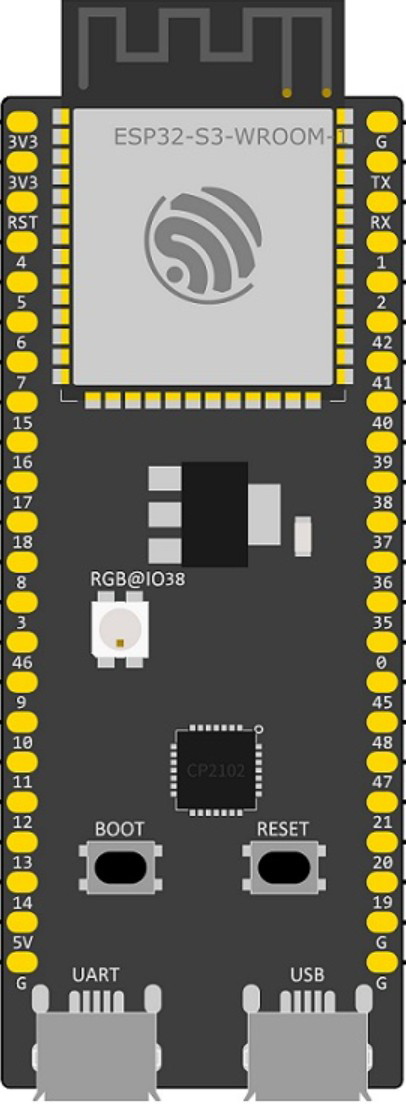
 Design with ESP32-S3-DevKitC-1-N32R16V Entwicklungsplatine in Cirkit Designer
Design with ESP32-S3-DevKitC-1-N32R16V Entwicklungsplatine in Cirkit DesignerIntroduction
The ESP32-S3-DevKitC-1-N32R16V Entwicklungsplatine is a development board manufactured by Espressif. It is built around the ESP32-S3 microcontroller, which features dual-core Xtensa LX7 processors, integrated Wi-Fi (802.11 b/g/n), and Bluetooth 5 (LE) capabilities. This board is designed for IoT applications, offering high performance, low power consumption, and advanced connectivity options. It is ideal for prototyping, development, and deployment of smart devices.
Explore Projects Built with ESP32-S3-DevKitC-1-N32R16V Entwicklungsplatine
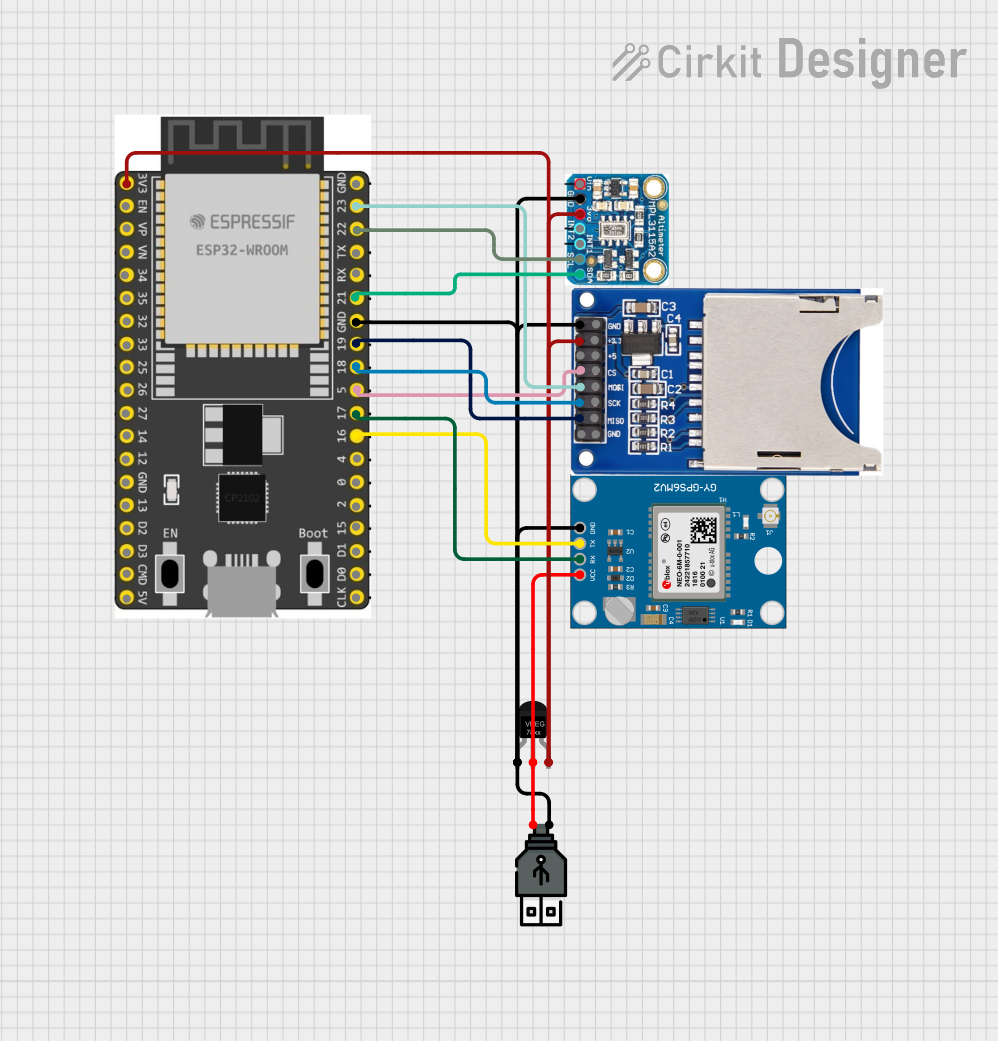
 Open Project in Cirkit Designer
Open Project in Cirkit Designer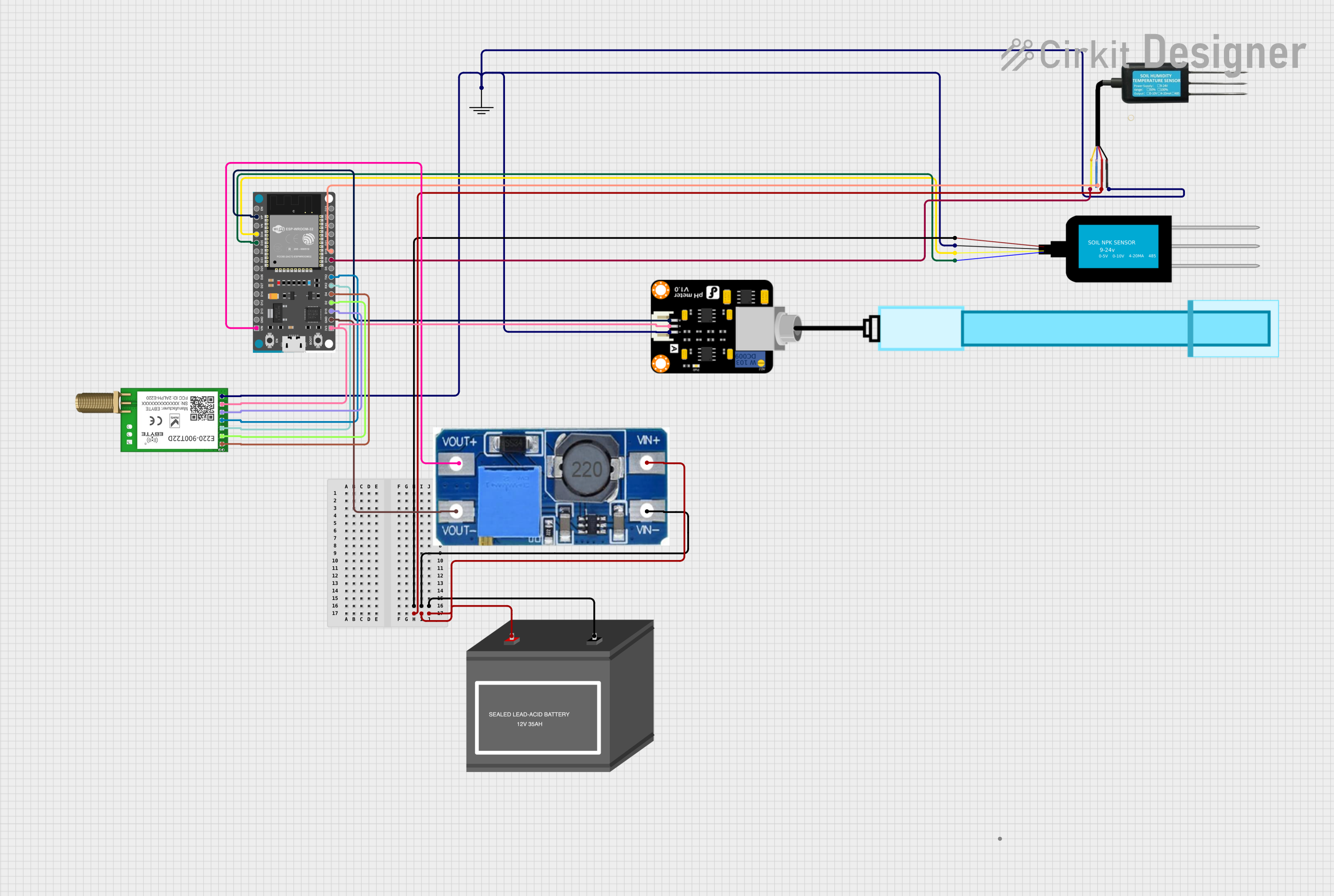
 Open Project in Cirkit Designer
Open Project in Cirkit Designer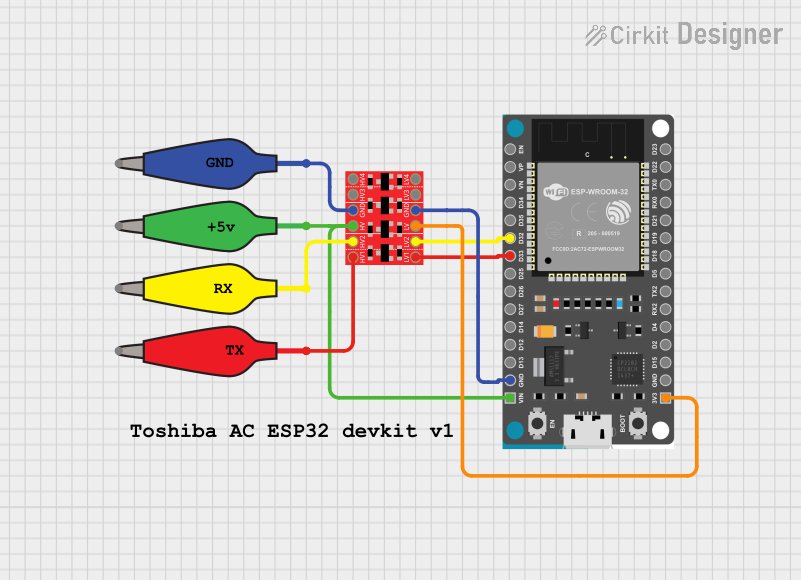
 Open Project in Cirkit Designer
Open Project in Cirkit Designer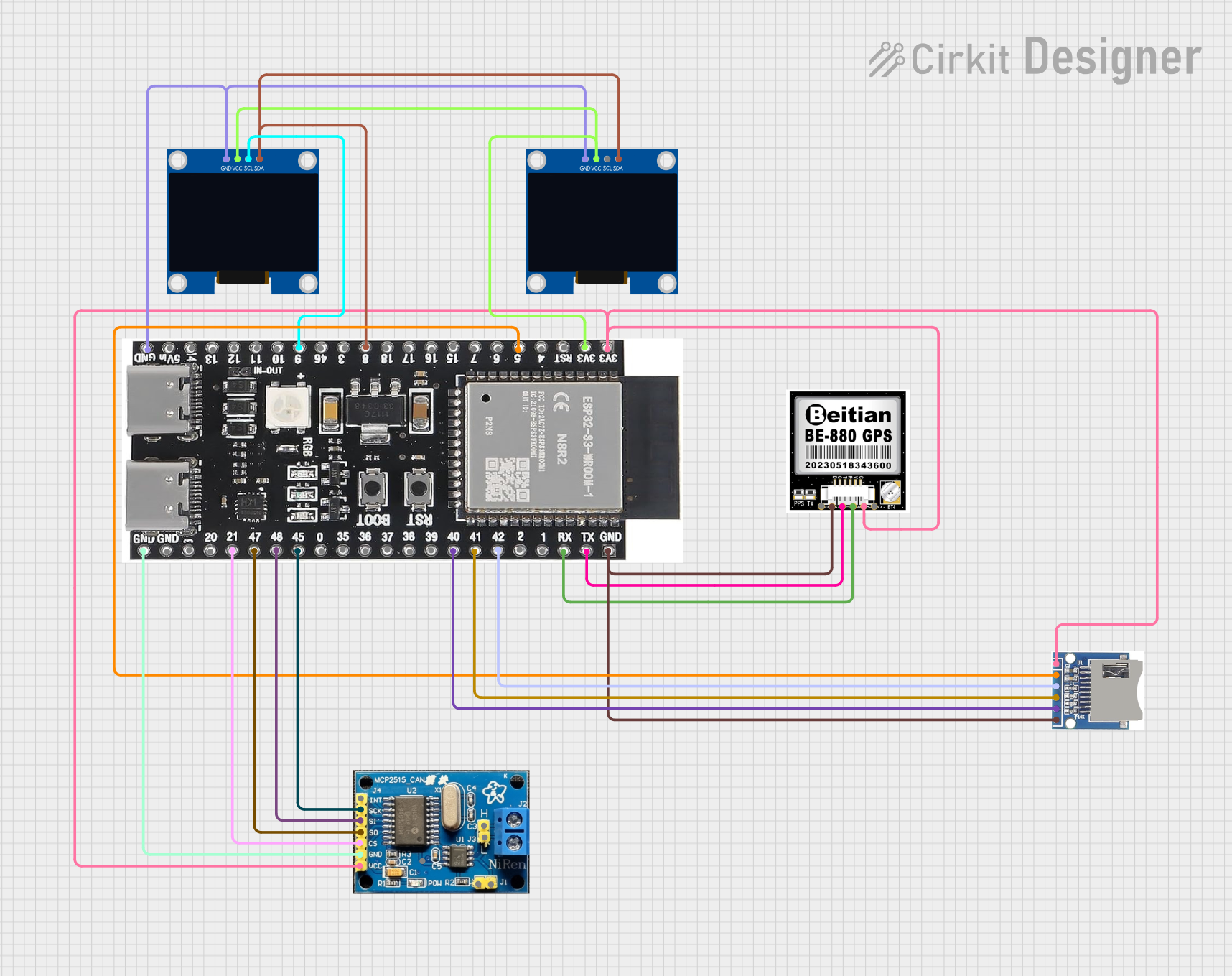
 Open Project in Cirkit Designer
Open Project in Cirkit DesignerExplore Projects Built with ESP32-S3-DevKitC-1-N32R16V Entwicklungsplatine

 Open Project in Cirkit Designer
Open Project in Cirkit Designer
 Open Project in Cirkit Designer
Open Project in Cirkit Designer
 Open Project in Cirkit Designer
Open Project in Cirkit Designer
 Open Project in Cirkit Designer
Open Project in Cirkit DesignerCommon Applications and Use Cases
- IoT devices and smart home systems
- Wearable electronics
- Industrial automation and control
- Wireless sensor networks
- Voice recognition and AI-based applications
- Prototyping for Wi-Fi and Bluetooth-enabled devices
Technical Specifications
Below are the key technical details of the ESP32-S3-DevKitC-1-N32R16V:
| Specification | Details |
|---|---|
| Microcontroller | ESP32-S3 (Xtensa LX7 dual-core, 240 MHz) |
| Flash Memory | 16 MB (Octal SPI Flash) |
| PSRAM | 8 MB |
| Wi-Fi | 802.11 b/g/n (2.4 GHz) |
| Bluetooth | Bluetooth 5 (LE) |
| GPIO Pins | 27 GPIOs (configurable for various functions) |
| Operating Voltage | 3.3V |
| Input Voltage Range | 5V (via USB Type-C) |
| Interfaces | SPI, I2C, I2S, UART, PWM, ADC, DAC, USB OTG |
| USB Connectivity | USB Type-C (supports programming and power supply) |
| Dimensions | 54 mm x 25.5 mm |
| Operating Temperature | -40°C to +85°C |
| Power Consumption | Ultra-low power modes available |
Pin Configuration and Descriptions
The ESP32-S3-DevKitC-1-N32R16V features a 2x19 pin header layout. Below is a summary of the pin configuration:
| Pin | Name | Description |
|---|---|---|
| 1 | 3V3 | 3.3V power output |
| 2 | GND | Ground |
| 3 | IO0 | GPIO0, used for boot mode selection |
| 4 | IO1 | GPIO1, general-purpose input/output |
| 5 | IO2 | GPIO2, supports ADC, PWM, and other functions |
| 6 | IO3 | GPIO3, supports ADC, PWM, and other functions |
| ... | ... | ... (Refer to the official datasheet for the full pinout) |
| 38 | EN | Enable pin, used to reset the board |
Note: For the complete pinout and alternate functions, refer to the official Espressif documentation.
Usage Instructions
How to Use the Component in a Circuit
Powering the Board:
- Connect the board to your computer or power source using a USB Type-C cable. The board operates at 3.3V internally but accepts 5V input via USB.
Programming the Board:
- Install the Espressif ESP32-S3 board package in the Arduino IDE or use the ESP-IDF (Espressif IoT Development Framework) for advanced development.
- Select the correct board and port in the IDE, then upload your code.
Connecting Peripherals:
- Use the GPIO pins to connect sensors, actuators, or other peripherals. Ensure that the voltage levels are compatible (3.3V logic).
Wi-Fi and Bluetooth Setup:
- Use the built-in libraries (e.g.,
WiFi.handBluetoothSerial.hin Arduino) to configure wireless connectivity.
- Use the built-in libraries (e.g.,
Important Considerations and Best Practices
- Voltage Levels: Ensure all connected peripherals operate at 3.3V logic to avoid damaging the board.
- Boot Mode: To enter bootloader mode, hold the BOOT button while pressing the EN button.
- Power Supply: Use a stable 5V power source when powering the board via USB.
- ESD Protection: Handle the board with care to avoid electrostatic discharge damage.
Example Code for Arduino UNO Integration
Below is an example of how to use the ESP32-S3-DevKitC-1-N32R16V to connect to Wi-Fi and send data to a server:
#include <WiFi.h>
// Replace with your network credentials
const char* ssid = "Your_SSID";
const char* password = "Your_PASSWORD";
void setup() {
Serial.begin(115200); // Initialize serial communication at 115200 baud
delay(1000);
// Connect to Wi-Fi
Serial.println("Connecting to Wi-Fi...");
WiFi.begin(ssid, password);
while (WiFi.status() != WL_CONNECTED) {
delay(500);
Serial.print(".");
}
Serial.println("\nWi-Fi connected!");
Serial.print("IP Address: ");
Serial.println(WiFi.localIP()); // Print the device's IP address
}
void loop() {
// Add your main code here
}
Note: Replace
Your_SSIDandYour_PASSWORDwith your Wi-Fi credentials.
Troubleshooting and FAQs
Common Issues Users Might Face
Board Not Detected by Computer:
- Ensure the USB cable is functional and supports data transfer.
- Verify that the correct drivers for the ESP32-S3 are installed.
Upload Fails in Arduino IDE:
- Check that the correct board and port are selected in the IDE.
- Hold the BOOT button while uploading the code to force the board into bootloader mode.
Wi-Fi Connection Issues:
- Verify that the SSID and password are correct.
- Ensure the Wi-Fi network operates on the 2.4 GHz band (not 5 GHz).
Peripherals Not Working:
- Double-check the wiring and ensure the peripherals are compatible with 3.3V logic.
- Confirm that the correct GPIO pins are used in the code.
Solutions and Tips for Troubleshooting
- Use the Serial Monitor in the Arduino IDE to debug and view error messages.
- Refer to the official Espressif documentation for advanced debugging techniques.
- If the board becomes unresponsive, press the EN button to reset it.
For further assistance, visit the Espressif Support Forum.